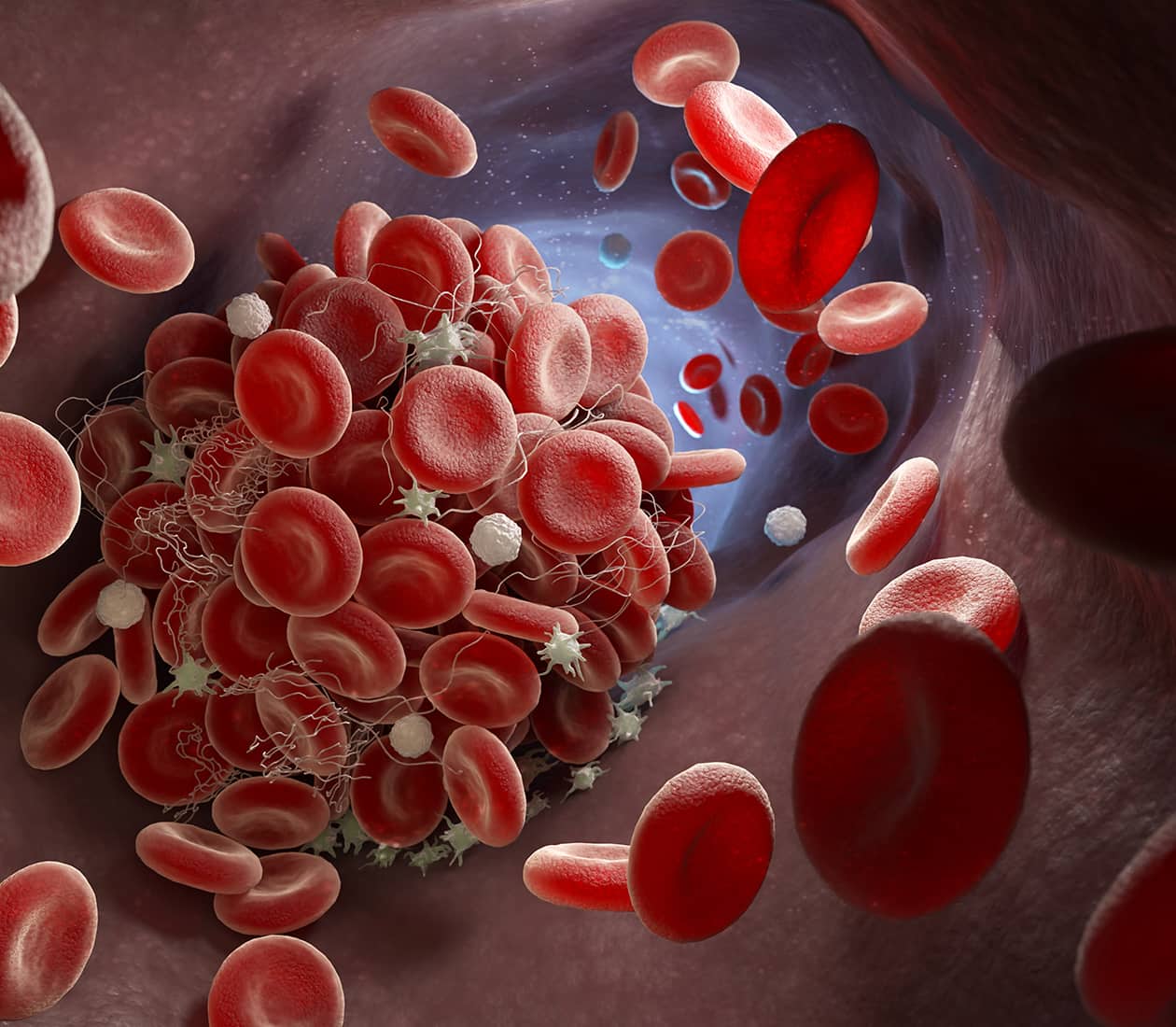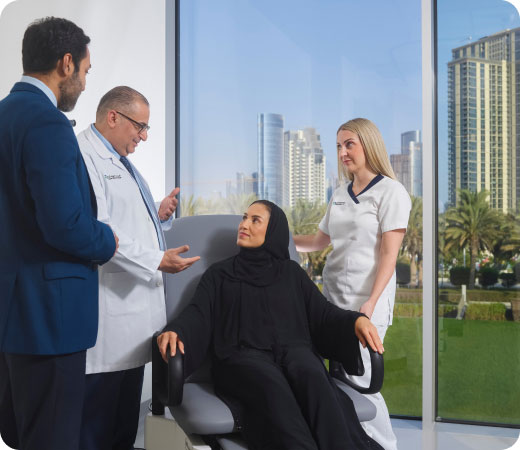
The Leukemia Program at Cleveland Clinic Abu Dhabi provides specialized care and support for people diagnosed with leukemia, close to home. Our team is experienced in diagnosing and treating a range of different types of leukemia, including acute lymphoblastic leukemia, chronic lymphocytic leukemia, acute and chronic myeloid leukemia, and others.
The skilled, multidisciplinary Leukemia Program team supports the care of both outpatients and inpatients at Cleveland Clinic Abu Dhabi. The program offers specialized testing to explore the genetics of each patient and will then tailor treatments specifically to each individual.

We offer every patient a dedicated team of medical experts to support them, and their family, throughout their cancer journey. The multidisciplinary team meets daily to discuss each patient’s needs, their progress and to decide the best treatment plan. We work closely with the Leukemia and Myeloid Disorders Program at Cleveland Clinic in the US when needed, one of the largest and most respected blood cancer programs in the world, and home to one of the country’s only rare blood cancer clinics.

Leukemia is cancer which starts in the bone marrow. Leukemia is categorized based on which type of white blood cell is affected; myeloid or lymphocytes, and whether it is developing quickly (acute) or slowly (chronic).
The Leukemia Program treats a range of leukemias, including:

Symptoms of leukemia develop when the number of cancerous cells increases within the bone marrow. Acute leukemia symptoms tend to appear suddenly, be more severe and are similar to those of a virus or flu. Symptoms of chronic leukemia can take a long time to develop, and the disease is often discovered when an elevated white blood cell count is noticed during a routine blood test. More common symptoms of leukemia include:
These symptoms can also be caused by many other common conditions so always see your doctor for an accurate diagnosis.
Blood cancers are caused by changes (mutations) that happen in the DNA within our blood cells. Other risk factors for developing the most common types of blood cancer can include:
It’s important to note that most people with one (or more) of the above risk factors will never develop leukemia, and that most people who develop the disease have no known risk factors.

Diagnosing leukemia can involve a number of tests to accurately determine its type and subtype, and may include:
Imaging scans, including:
After a diagnosis has been given, the team will decide on the most effective treatment plan, based on several factors including your age, the type of leukemia you have, how advanced the cancer is, as well as other factors.
Treatment may include:

Researchers are still unsure how to prevent leukemia. However, being aware of the symptoms and reducing the known risk factors, such as avoiding exposure to radiation and harmful chemicals, may be helpful.
Following a healthy lifestyle, eating a balanced diet and taking regular exercise can reduce your chances of developing many types of cancer.

Our Leukemia Program doctors have extensive expertise in the field of cancer and blood disorders, and are board certified in each of the hematology and medical oncology specialties. The team provides excellent, Patients First medical care based on current United States and international guidelines. Caregivers involved in patient care for this program includes:

Speak with our Contact Center for assistance
Request an Appointment 800 8 2223 International Patients